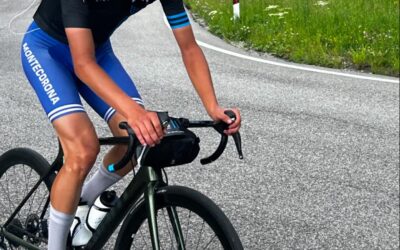When it comes to challenging climbs for cyclists, Austria stands out as the country with some of the hardest ascents in Europe. Known for its steep gradients, high altitudes, and breathtaking scenery, Austria offers a unique and demanding experience for any cyclist looking to test their limits. Here are the reasons why Austria is renowned for its tough climbs and a look at some of its most challenging routes.
Which Country Has the Hardest Climbs in Europe?
Austria is known for having the hardest climbs in Europe due to its steep gradients, high altitudes, and technical difficulty. Here are the key reasons:
- Steep Gradients: Many Austrian climbs feature incredibly steep sections.
- High Altitudes: Climbs often reach significant elevations, adding to the challenge.
- Technical Difficulty: The climbs are technically demanding, requiring excellent bike handling skills.
- Breathtaking Scenery: The stunning landscapes provide a visual reward for the physical effort.
Steep Gradients
Incredibly Steep Sections: Austrian climbs are notorious for their steep gradients, often exceeding 10% for extended sections. This makes them physically demanding and tests a cyclist’s strength and stamina. The Kitzbüheler Horn, for example, has an average gradient of 12.5% over 7.1 km, with sections reaching 22.3%.
Continuous Climbing: The climbs in Austria often feature long, uninterrupted ascents, requiring sustained effort and resilience. The Großglockner High Alpine Road is another example, with gradients that consistently challenge riders over its 27 km length.
High Altitudes
Significant Elevations: Many of Austria’s climbs reach high altitudes, which can make breathing more difficult and increase the overall challenge. The Ötztaler Glacier Road, one of the highest paved roads in Europe, climbs to an altitude of 2,829 meters.
Altitude Adaptation: Climbing at high altitudes requires adaptation and acclimatization, adding another layer of difficulty for cyclists who are not used to these conditions. This can affect performance and endurance.
Technical Difficulty
Demanding Terrain: Austrian climbs are not just physically demanding; they also require technical proficiency. Riders must navigate sharp bends, narrow roads, and variable surfaces. The Kaunertal Glacier Road, with its 29 hairpin bends, is a prime example of a technically challenging climb.
Bike Handling Skills: The technical nature of these climbs means that cyclists need to have excellent bike handling skills to maintain control and momentum, especially on descents.
Breathtaking Scenery
Stunning Landscapes: Despite the physical and technical challenges, the climbs in Austria offer some of the most breathtaking scenery in Europe. The visual rewards of the snow-capped peaks, lush valleys, and pristine alpine landscapes provide motivation and a sense of accomplishment.
Visual Motivation: The stunning views can serve as a powerful motivator, encouraging cyclists to push through the toughest sections and enjoy the unique beauty of the Austrian Alps.
Conclusion
Austria stands out as the country with the hardest climbs in Europe, offering a combination of steep gradients, high altitudes, technical difficulty, and stunning scenery. These elements make Austrian climbs some of the most challenging and rewarding for cyclists looking to test their limits and experience the beauty of the Alps.
For those looking to take on an even bigger challenge, consider participating in the High Altitude World Championshipsor exploring the list of all cols over 2000 meters. Join our exclusive community of high-altitude cyclists and create a community profile today.
For more insights into Austria’s toughest climbs, check out our map here.





